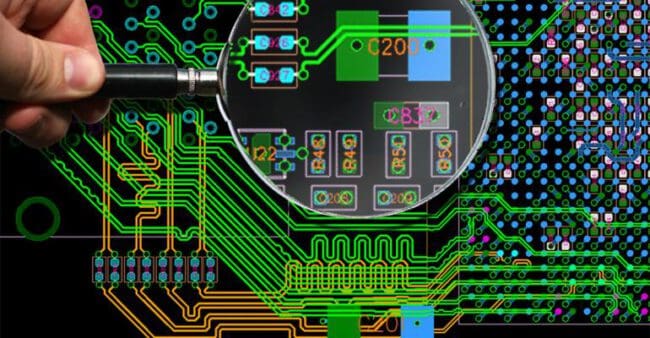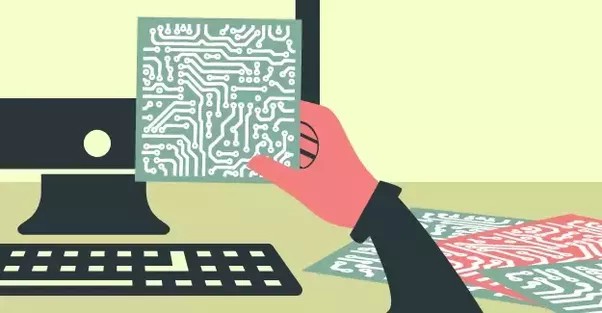Printed circuit boards are in the very core of every micro controller, which makes them essential in the modern-day tech. There’s literarily no piece of electronic equipment, where PCBs weren’t used. On top of everything, the future of PCBs seems very bright, which is why learning PCB design is a wise choice.
In fact, the average yearly salary of a PCB designer in the USA is $71,000, but is expected to grow even higher in the near future. With all of this in mind, you surely want to be a part of it. The first step in learning PCB design is choosing the right software.
Best Free PCB Design Tools
In order to see if PCB design is the right career path for you, it’s best to use a software that’s free of charge. The good news is that there are lots of free tools for PCB design out there, but the problem is that most of them are too complicated. As you need it for learning the basics of circuit board design, you need one that’s simple to use.
Also read: Backup Windows System Partition with AOMEI Backupper
Altium ‘s Circuit Maker might be the perfect solution. This software is free and easy to use, making it perfect for the newbies. The issue with Altium products is that they are designed for Windows, so if you are a Mac user, you might want to look someplace else. For example, you can use online PCB tool such as ExpressPCB or PCBWeb.
Although they might be great for learning PCB design, these free tools are not good enough for large-scale projects. The big PCB projects are where the money lies, so in order not to let a good opportunity slip away, you need to get proper software. When you think that you’re ready to start making your living from PCB design, it is time to get the real deal.

pcb
Best Paid PCB Design Tools
If you want nothing but the best, look no further than Altium Designer. This is by far the best PCB design tool on the market, with lots of features that will make any task a piece of cake. According to a number of experienced PCB designers, Altium Designer is a flawless program that makes a real difference in their work. What’s not so great about it, is its price! In order to get a lifelong license for this program, you will have to splash out several thousand dollars. It sure does pay off, but not everyone has so much money to spend.
Altium Designer’s price is all about what people make to think about the alternatives. People need a software that has as much amazing features as possible, while not costing too much money. One such program is called EAGLE. Developed by a German company in the late 1980, this software was acquired by Autodesk Inc. in 2016. What makes it great is that it’s easy to use, with a big number of helpful features included. Still, the reason why EAGLE is the first choice of many is that it costs a few times less than its rival, Altium Designer.
Also read: Ginger Software Alternatives
PCB Designs – Description and Variants
For any type of electronic gadget or component, printed circuit boards act as an integral part on many levels. Our lives are a combination of healthy living and efficient electronic gadgets, that too, to such an extent that our very survival depends on the integration and use of these gadgets. The ever growing world of electronic devices has crept into all other fields, sectors and industries, and is now in shared co-existence with our very reality itself. The biggest example of this shared existence can be seen in the world of modern medical science, military, automobile, and aero space technology. These industries are practically supported and run by the electronic sector to bring about changes in the technology used and invented.
Our world is an epitome of electronic gadgets and devices which we use on a daily basis, and almost 95% of these devices are run by a printed circuit board, better known as a PCB. So what is PCB all about? PCB is usually a substrate sheet of a non conducting variety, with etched copper tracks, that converge at various nodes and junctions all over the board. The main function that a PCB performs is to connect to a variety of electronic components via the conducting paths etched on the board in a criss cross form. Another ancillary function of a PCB is to provide physical support to all electronic components in an electronic device.
There are mainly two types of PCBs. The first type is the through-hole PCB, which has a number of tiny holes punched on it, on each and every node. These holes are used for soldering component leads, which go through these holes. This technology has been around for quite a while now, and is used mainly for inexpensive electronic devices like calculators. These boards are also used to support bulky electronic components like high rating capacitors and transformers.
The second type of PCB used nowadays is the onboard SMD variant, also known as the surface mounted device variant. This type does not have any holes, but conducting beds, which are perfect for soldering SMD components. The soldering needs to be done with special specified equipment only. The mechanical strength of these PCBs are quite high, and both the surfaces are good for soldering components.
The high quality and precision of PCBs or printed circuit boards is extremely crucial, especially to allow the finished product to retain the high quality level as well. For this very reason, the design and creation of PCBs should be left to the experts, who have the capability to research more and more and find out new ways to develop PCBs much more efficiently and with a higher rate of accuracy. Many electronic companies make it a point to outsource all their PCB requirements to ensure that the quality is maintained.


COMMENTS